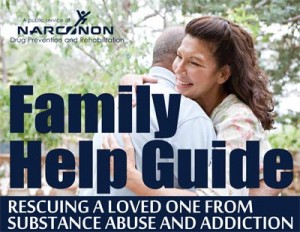Ask any expert in addiction recovery if enabling is wrong and they will all tell you the same thing: It’s the worst thing you can do for an addict.
 To make sure we are all talking about the same thing, here’s a definition of enabling:
To make sure we are all talking about the same thing, here’s a definition of enabling:
Enabling consists of actions and behavior that shield the addicted person from the consequences of his or her own actions. They are usually well-meaning efforts to solve problems the addict should be solving. Therefore they allow the addicted person to continue to make choices that are destructive to their own survival and the survival of others who rely on them.
So if a family is told they must stop enabling the addict, it’s terribly confusing if they have not yet grasped the true nature of addiction and how it must be dealt with. After all, up until now, they have been used to something like the following:
For years or decades before the addiction changes things, the family has been close. There were seldom any secrets of any importance. Family members were in touch with each other often, expressed their love for each other, shared plans for the future.
Now the family may be told that they have to discontinue this behavior that has worked so well as the young person was growing up and either nearing adulthood or becoming an adult.
The Arrival of Addiction
When addiction arrives on the scene, everything will start to change. For a while, things seem to be continue running on the same track but it’s different somehow. Small changes show up that don’t quite make sense. Those changes get more significant. Relationships start to become strained as the lies build up. Families are faced with the fact that the love and trust that used to exist has somehow changed in ways they can’t grasp. Not understanding yet what is happening, they still try to trust, hope, pray and love. As they do so, they begin to enable. They take actions that mean that the addicted person does not have to confront or suffer from the consequences of their decisions. For example, they continue:
• Paying their rent or bills
• Bailing them out of jail
• Covering endless legal fees and medical costs
• Loaning out the car or other valuables
• Helping them find a new job
• Listening to excuses about why jobs are lost, why money or valuables are missing or other strange things happen
• Giving them a shoulder to cry on when a relationship breaks up or the kids are taken away
• Letting them crash in the spare bedroom and sleep till noon every day
• Giving them cash in response to a never-ending list of dire emergencies
• Letting them have keys to homes or businesses
• Covering up thefts or other crimes
• Making repeated excuses for them
• Believing that the person is not once again using drugs although their behavior and physical signs would indicate that they are
Some family members never grasp the meaning for these changes and go on, year after year, trying to solve all the problems with more love, trust, prayers and help. If a person is just going through personal growth, this might work. When it’s addiction, it’s the wrong answer.
This is how love becomes enabling.
The family’s heartfelt efforts to help are exploited by the addict to escape the consequences of their decisions. Therefore they can continue to use drugs or drink and avoid that fateful day when they must at last decide that they have no choice but to start the journey back to sobriety.
Families Cry Out for Help
Narconon centers around the world have received many thousands of messages from families struggling with the problems of an addicted loved one. A common thread through many of these messages is that the problem has gone on for years with the legal, medical and personal costs mounting.
It’s heartbreaking when the family finally realizes that all their help failed to resolve the real problem – addiction. By the time they start looking for drug rehab, they may have already put $50,000 to $100,000 or more into solving the never-ending problems and now they are bankrupt.
If the family had just realized what the real problem was in the early days, they could have invested their time and funds in the rehab of their choice and the problem could have been resolved – replaced by lasting sobriety.
 If you know a family in this situation, send this article to them. Also forward the Family Help Guide to them. This guide can help them identify the drug being used and whether or not if the underlying problem is addiction. If it is, the guide will help them choose a drug rehab. This guide can be found here: http://www.narconon.org/drug-abuse/addiction-help-guide.html
If you know a family in this situation, send this article to them. Also forward the Family Help Guide to them. This guide can help them identify the drug being used and whether or not if the underlying problem is addiction. If it is, the guide will help them choose a drug rehab. This guide can be found here: http://www.narconon.org/drug-abuse/addiction-help-guide.html
Above all, encourage them to stop enabling and use every ounce of influence they have to get the addicted person to agree to enter a rehabilitation program now. For help finding the Narconon center nearest them, call 1-800-775-8750 today. Narconon centers also have access to people experienced in doing interventions, should this be needed to help the addicted person make the decision.
Addiction can be overcome. Enabling prevents recovery from ever happening. Stop the enabling and you can start the recovery.